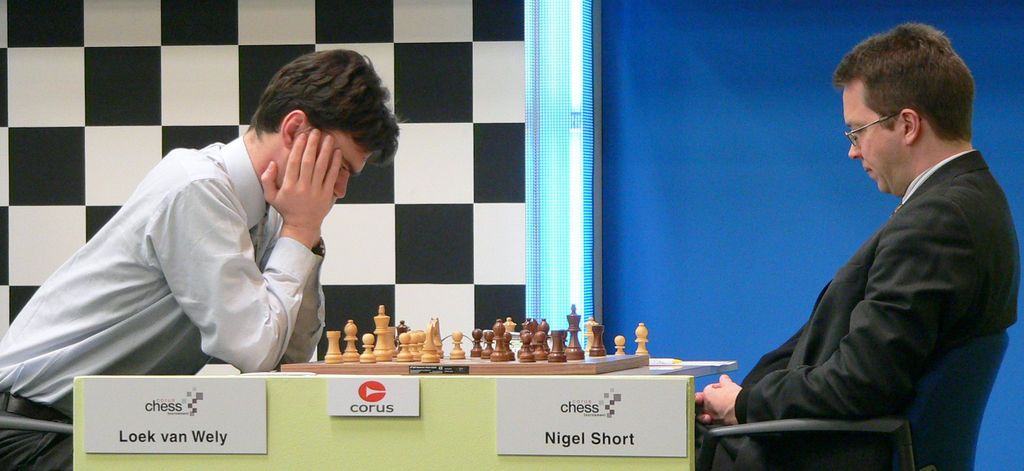
Tata Steel Chess: A Photo Retrospective
As chess tournaments go, Tata Steel Chess has run pretty much forever—it has been held annually since 1938 with just one missed year. In that time, it became one of the strongest chess competitions in the world.

It also became one of the most-photographed tournaments. Why? Well, in addition to its lifespan and strength, the Wijk aan Zee tournament has been of interest to the Dutch press almost as long as it has been around, and the photos they took from 1948-89 are available on Wikipedia without restrictions.
Presenting, with some commentary, several images of Tata Steel Chess throughout the years under its several yet consistent iterations.
- From National To International: Beverwijk Hoogovens (1938-67)
- Soviet Dominance Into Western Decadence: Wijk aan Zee/Hoogovens (1968-1999)
- Period Of Transition: Corus Chess (2000-2010)
- The Modern/Magnus Era: Tata Steel Chess (2011-present)
- Conclusion
From National To International: Beverwijk Hoogovens (1938-67)
The first field, in 1938, was entirely Dutch. Ten years later, the tournament had become international but still had six of the 10 players representing the host Netherlands.
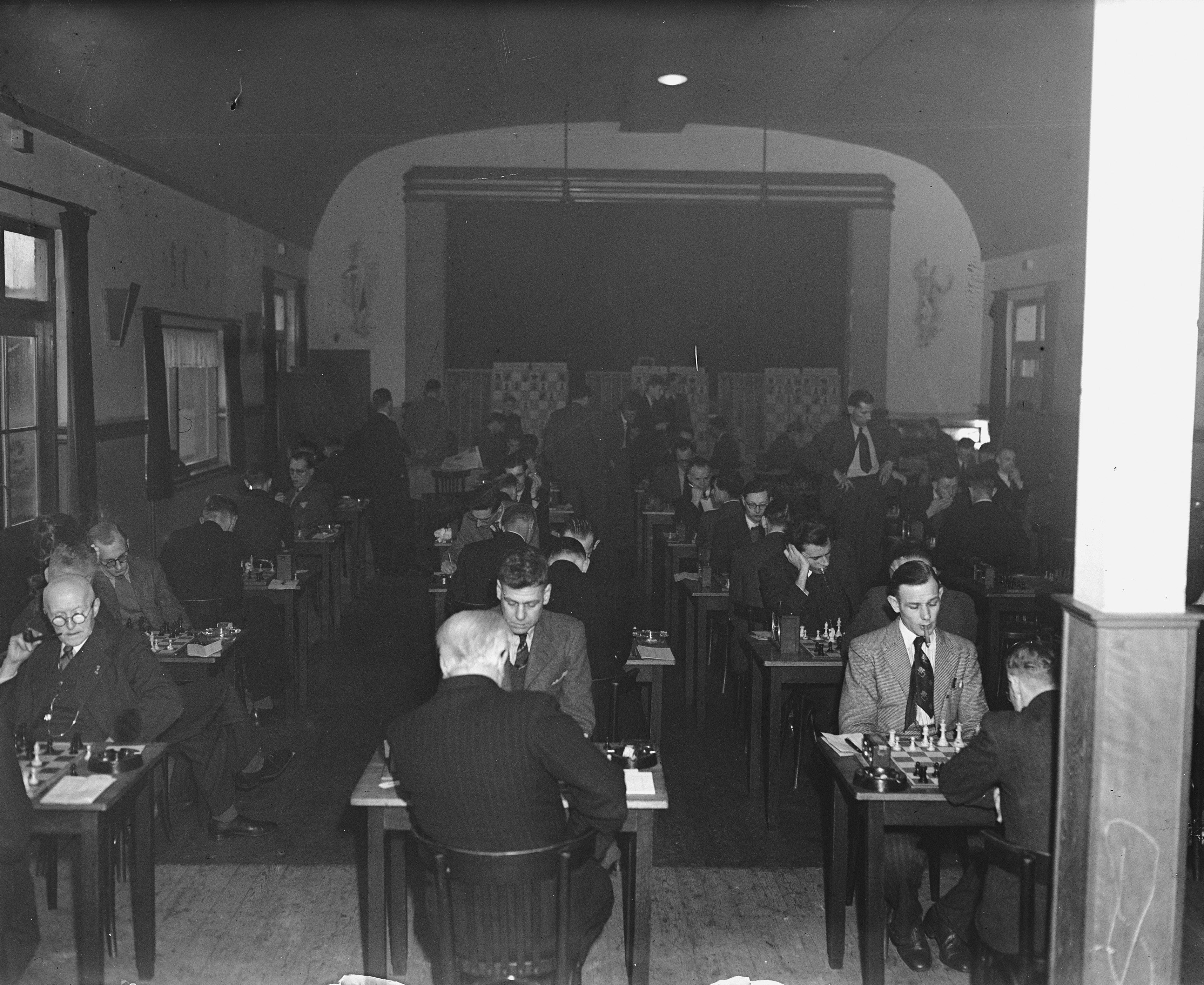
One of the five, IM Lodewijk Prins, won the main event. Another decade after that, only four of the ten players were Dutch by national origin. But 1958 was still a good year for players from the host nation.
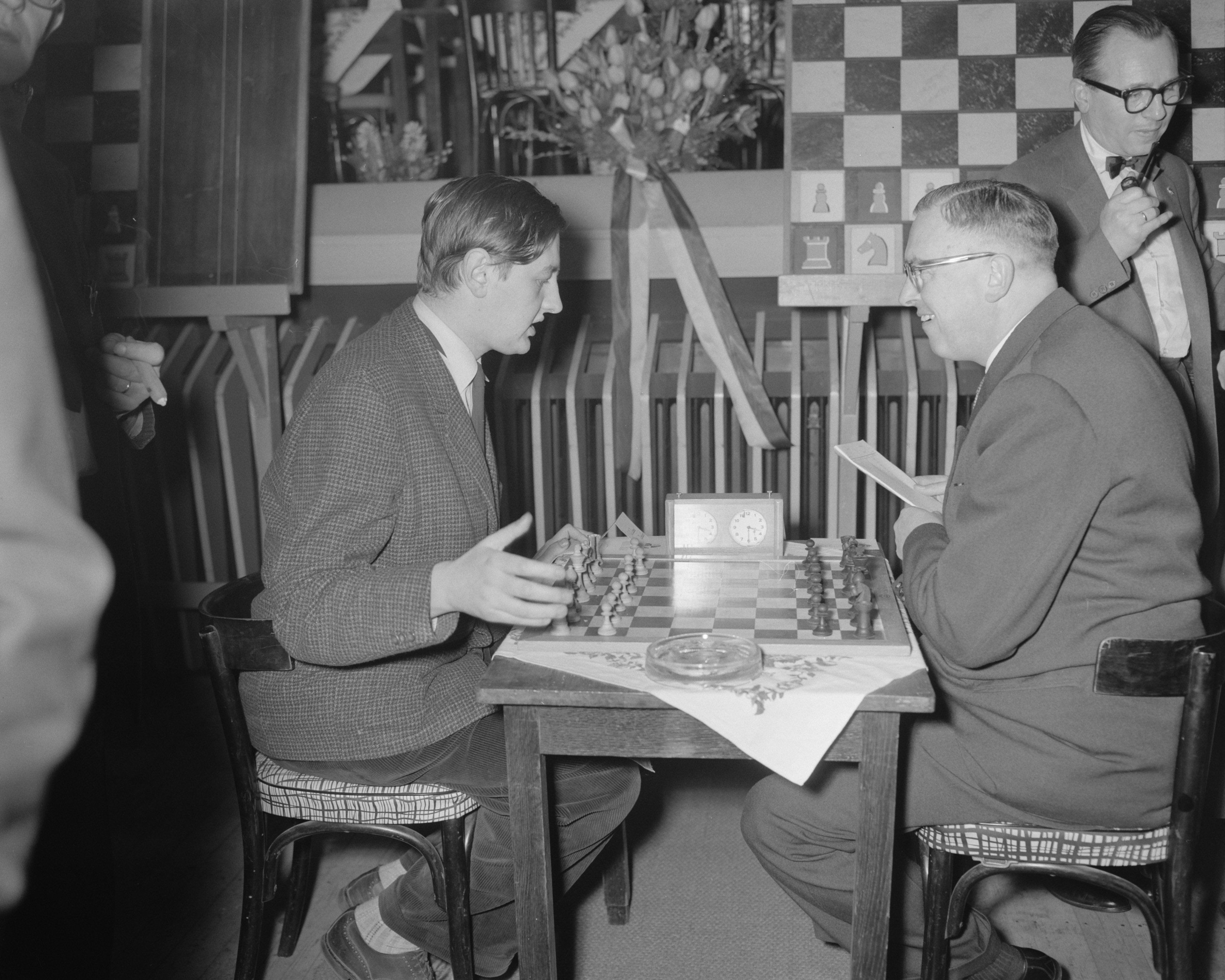
Two of the four were co-champions that year: GMs Max Euwe and Jan Hein Donner. They drew their individual game in 28 moves.
Combined, they won or shared first at Beverwijk (where the tournament was held until 1967) a combined seven times: Euwe in 1940, '42, '52, and '58 and Donner in 1950, '58, and '63.
By the 1960 Beverwijk tournament just two years later, however, it was clear the tide was turning towards a much more dramatic international flair.
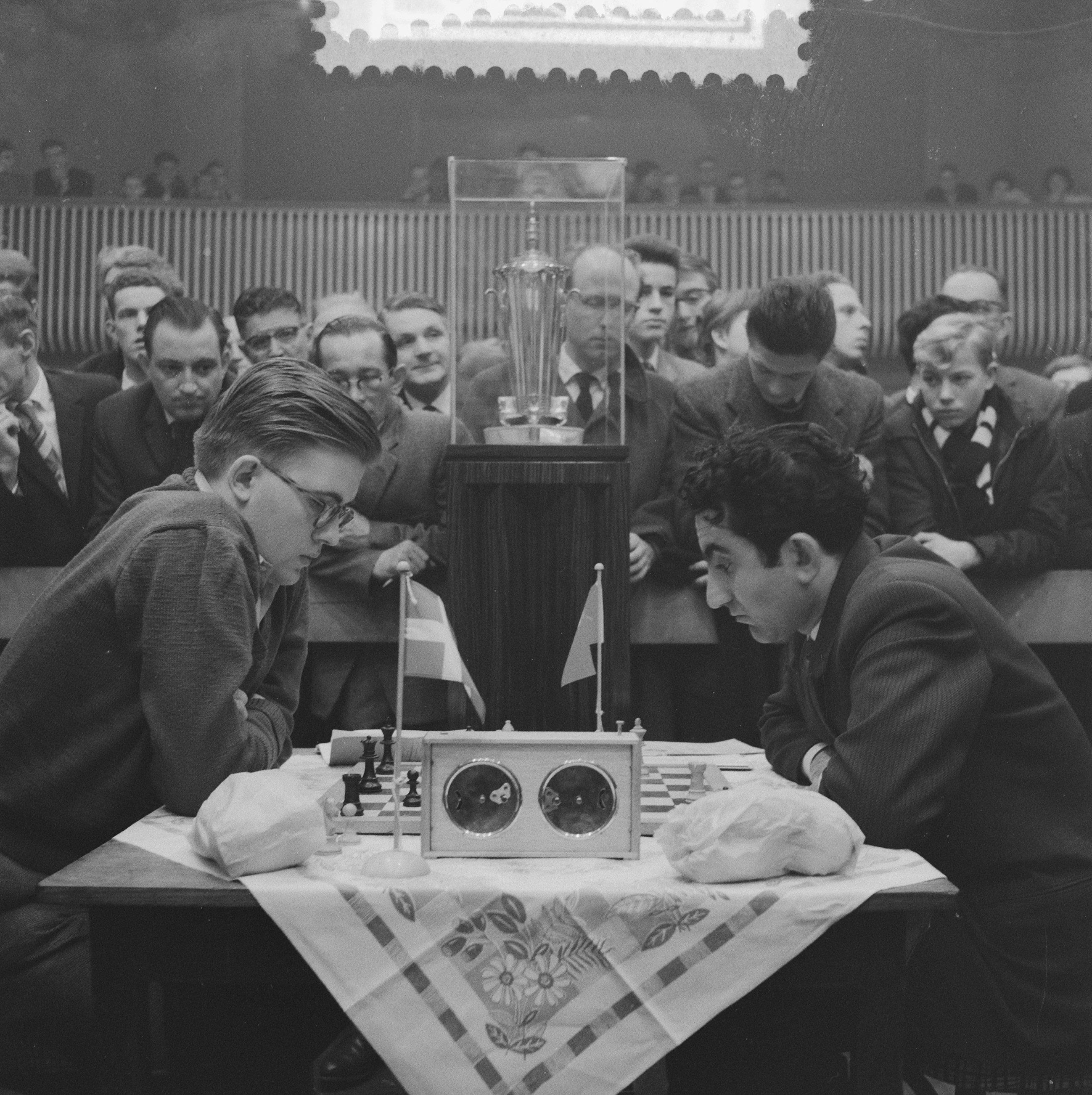
Some of the greatest players in world history showed up in 1960, not just local hero Euwe: GMs Bent Larsen, Tigran Petrosian, and Salo Flohr all played in 1960. Larsen and Petrosian would tie for first after Petrosian won their individual game in the event's final round. Meanwhile, Flohr finished fourth with Donner.
It was Larsen's second time at the tournament and the first for Petrosian and Flohr, who were also the first Soviet representatives in the tournament's history. Larsen is also responsible for one of the Tata organizers' favorite quotes: "Normal people have to see Naples before they die... but a Chess Grandmaster has to win Wijk aan Zee first."
Of course, in 1960, the tournament wasn't in Wijk aan Zee yet. That would come eight years later.
Wijk aan Zee
In 1968, the tournament moved about five kilometers west, from Beverwijk to Wijk aan Zee, to get closer to the sea. Hoogovens remained the sponsor. GM Viktor Korchnoi won, as he also would in 1971, '84, and '87.
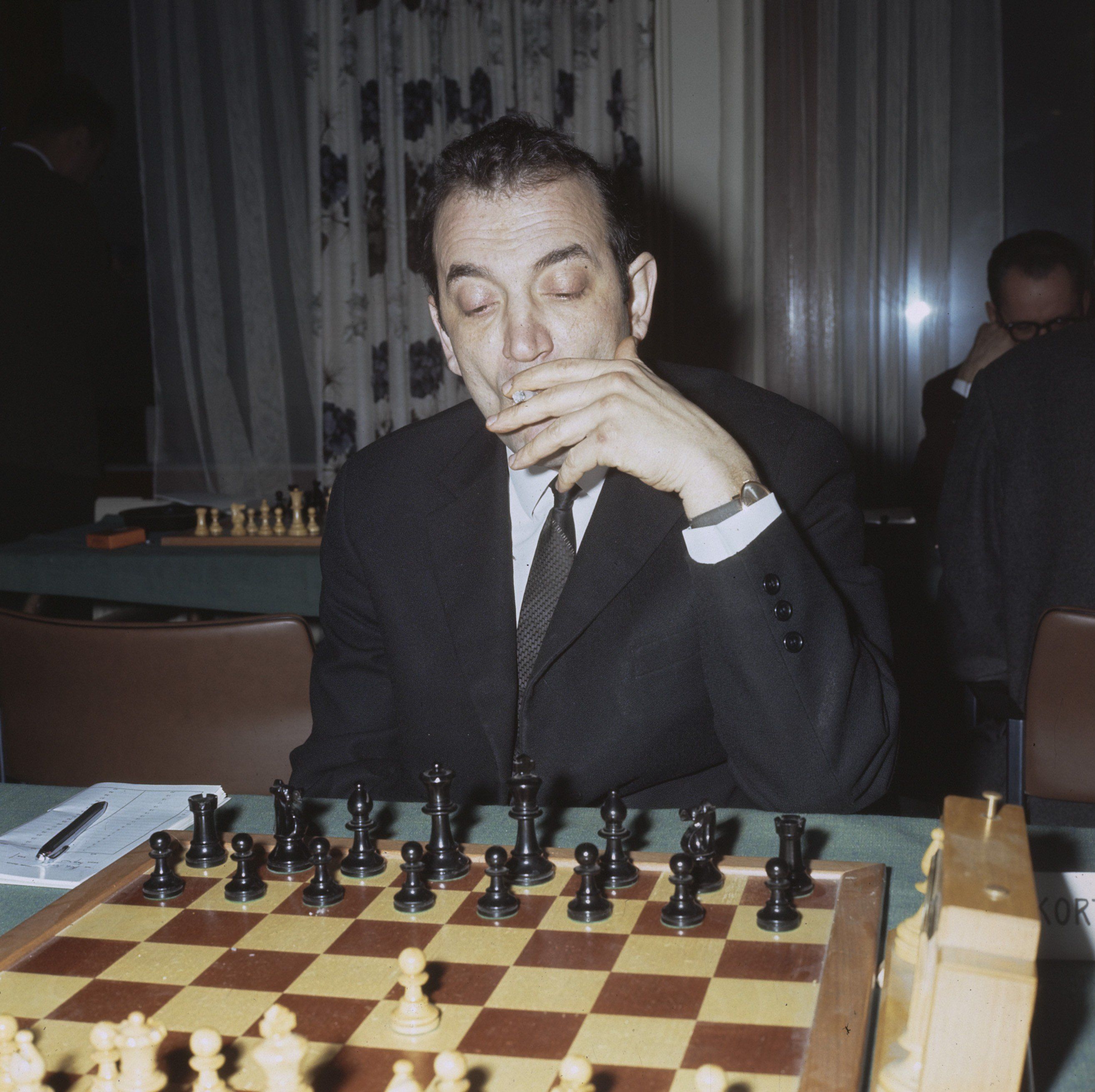
From 1964-71, 10 of the 11 champions and co-champions in the tournament were Soviets; the one exception, GM Lajos Portisch in 1965, shared first that year with Soviet GM Efim Geller. In just five years the USSR had gone from skipping Hoogovens to dominating it, presumably all part of their plan to own world chess. Of course, 1972 would end their hegemony in more ways than one: Portisch won outright at Wijk while GM Bobby Fischer (who never played at Wijk, if you're wondering) claimed the world championship.
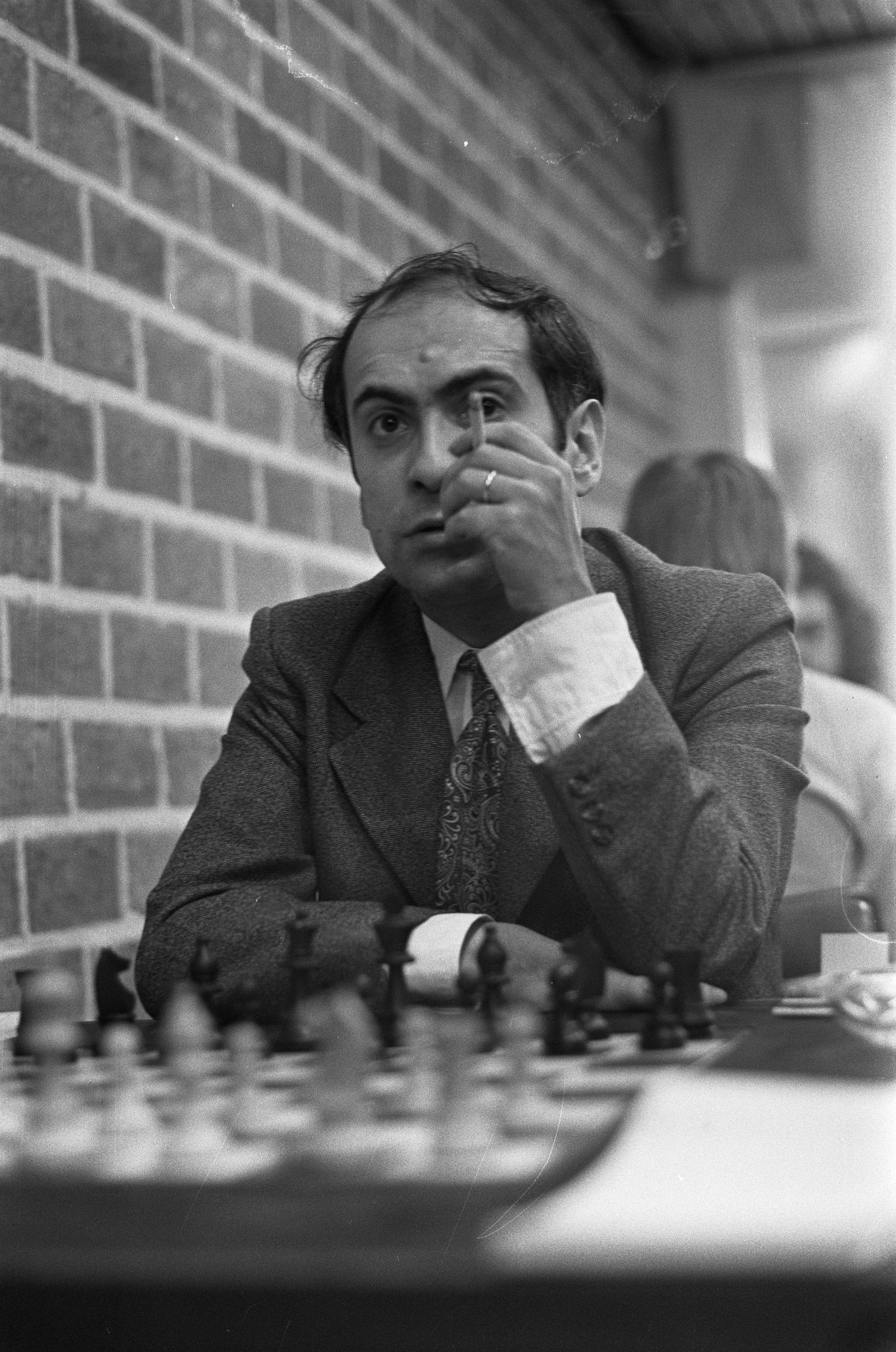
The Soviets took back Wijk the very next year when GM Mikhail Tal won in 1973 with 10.5/15 (six wins and nine draws). It wasn't even part of his amazing 95-game undefeated streak, which began later in the year, but it did presage it. The streak was a record that would last for 43 years.
The West closed the gap at Wijk for the rest of the 70s and 80s. GM Walter Browne of the United States won in 1974 and 1980 and was joined in the latter year by a familiar face.

Just as the Netherlands' two best players won in 1958, arguably America's two best at the time, GMs Yasser Seirawan and Browne, were co-winners in 1980. It was Yasser's last norm to become a grandmaster, only eight years after learning the rules.
Walking on by is GM Jan Timman, who won the following year along with fellow Dutchman GM Genna Sosonko (also a 1977 co-winner with Geller).
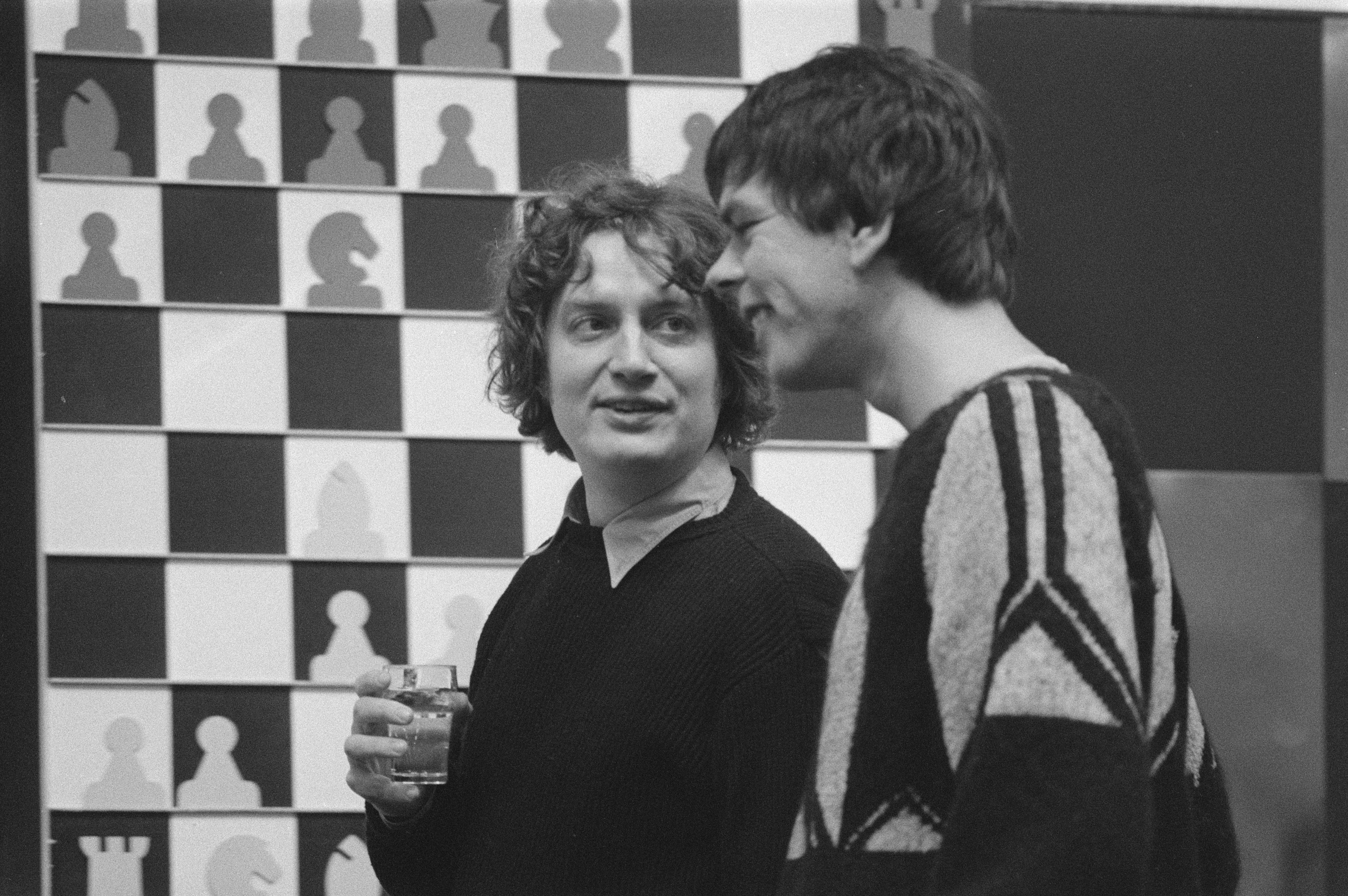
Timman won the tournament again, this time outright, with an undefeated 9/13. No Dutch player would claim the tournament for another 36 years.
In the meantime, the tournament continued to draw crowds.
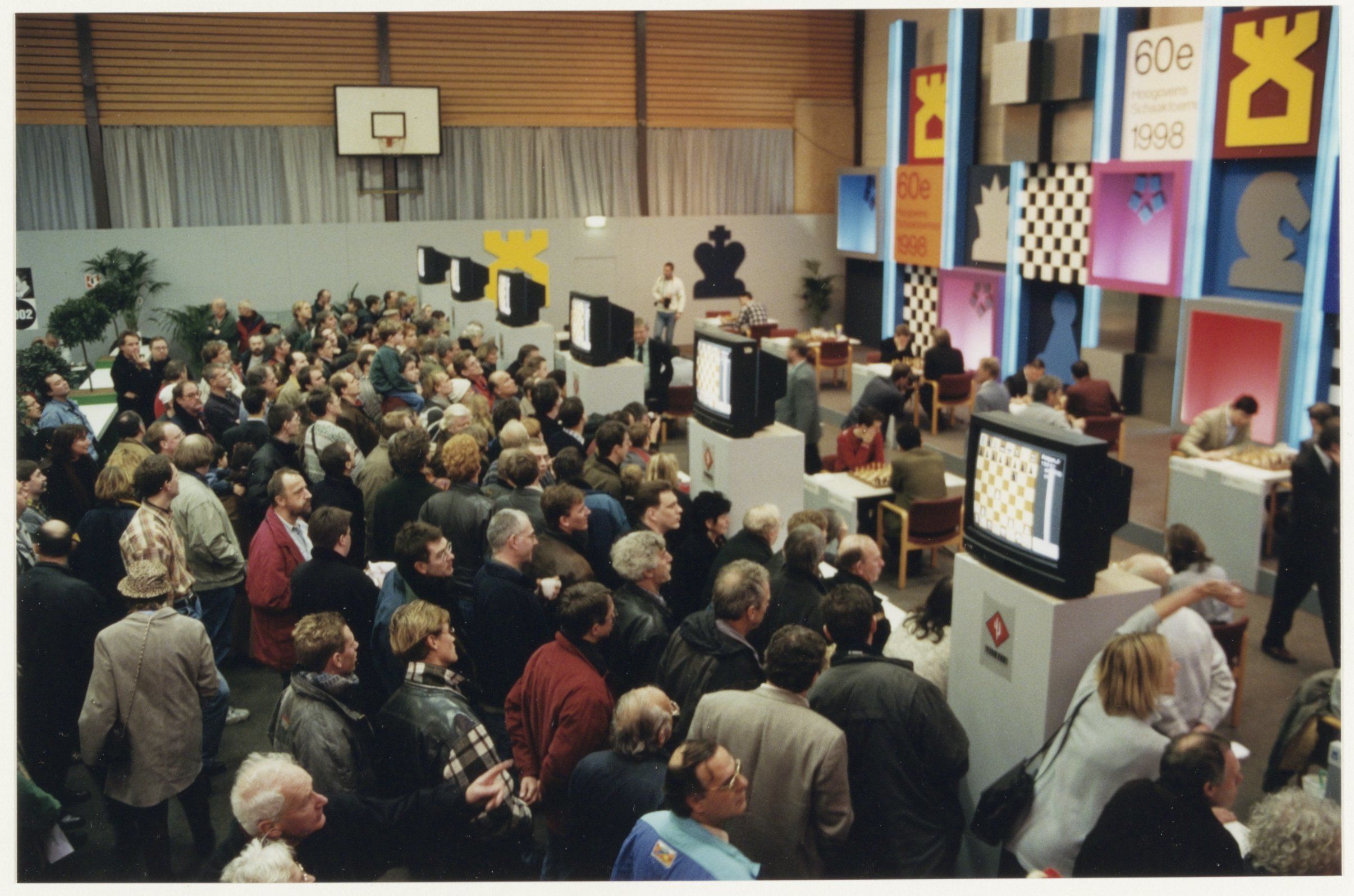
By fifty years after the first photo in this retrospective, interest in the tournament is booming. In 1998 it was won by two future world champions: GMs Vladimir Kramnik and Viswanathan Anand. The sitting classical world champion of the time, GM Garry Kasparov, won his first of three the following year.
Corus
1999 was also the last Hoogovens tournament; the company would merge with British Steel and become Corus. Fortunately for chess, the sponsorship was still considered worthwhile and the tournament continued under the new name in 2000, which Kasparov also won. He won the following year as well, when all the top nine players in the world participated. Of course, he'd lost his title to Kramnik in the meantime.
The top Dutch player at Corus 2005 was GM Loek van Wely, who later that year won his sixth straight Dutch Chess Championship. At Wijk, he scored 50% while beating GM Nigel Short in their game. The tournament was won by GM Peter Leko.
During the 11 years as Corus from 2000-10, three players were tournament champion or co-champion a combined seven times. They also happened to be world champions at one point or another: Kasparov, Anand, and, of course... GM Magnus Carlsen.
Tata Steel/Magnus
2011 was the tournament's first year as Tata Steel, as the company had been renamed. Which may seem kind of boring but it was still a milestone year with the tournament finally achieving its current branding.
Another milestone was GM Hikaru Nakamura, then 23, becoming the first American to win at Wijk aan Zee since 1980.
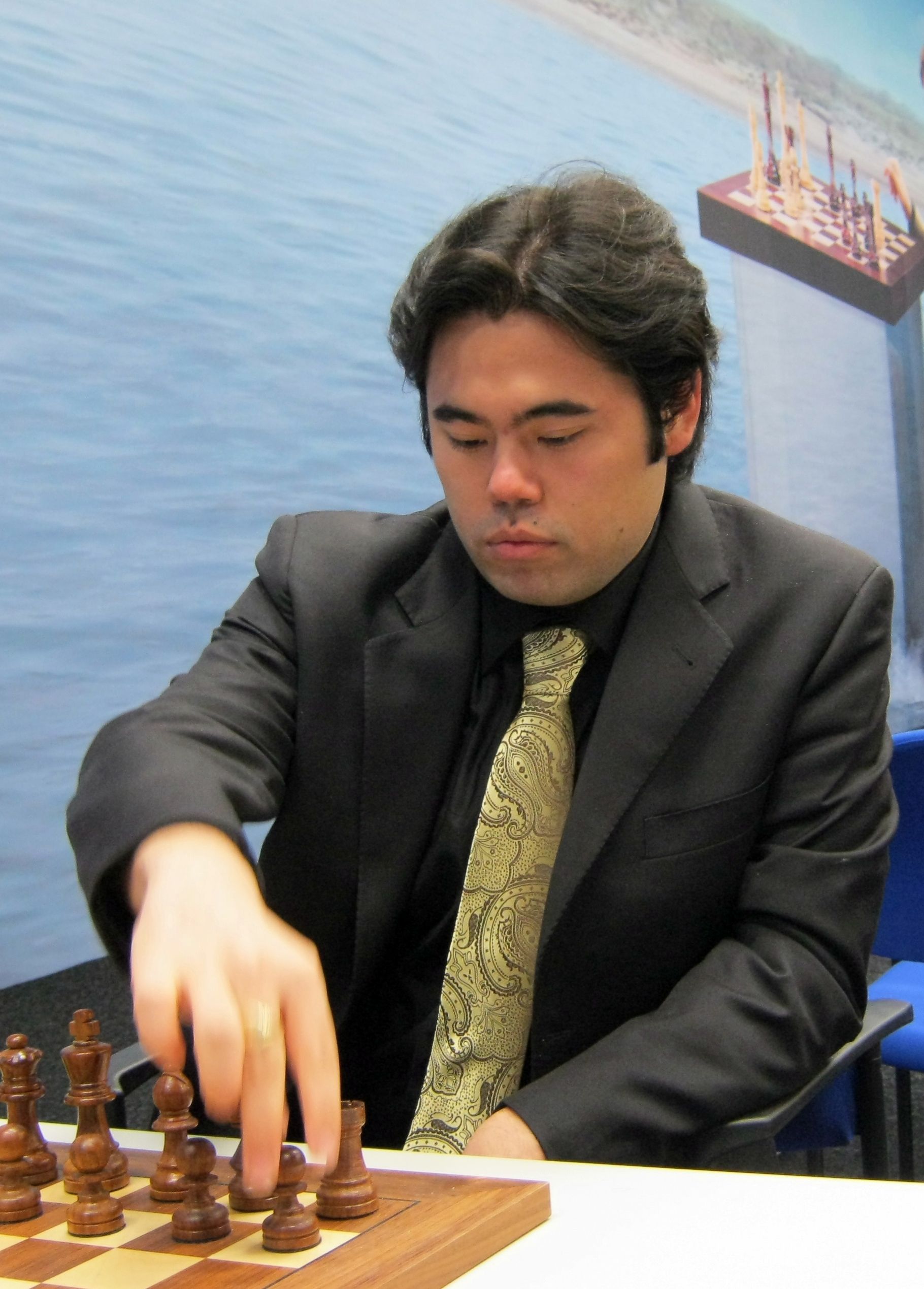
Newer chess fans may not realize that in 2011, with GM Bobby Fischer long-retired (1972/92) and short-dead (2008), the United States was not nearly the chess powerhouse that it is today; only three of their players—Nakamura, GM Gata Kamsky, and GM Alexander Onischuk—were in the world top 100. And so Nakamura's win was a big deal, even in the days before streaming.
The tournament's time as Tata Steel Chess has been dominated by Magnus, who won titles 3-7 in 2013, '15, '16, '18, and '19. Amazingly, even though several world champions have also been Tata champions, Carlsen's win in 2015 made him the first reigning, undisputed world champion to win at Wijk. Another interesting win for Carlsen followed in 2018.
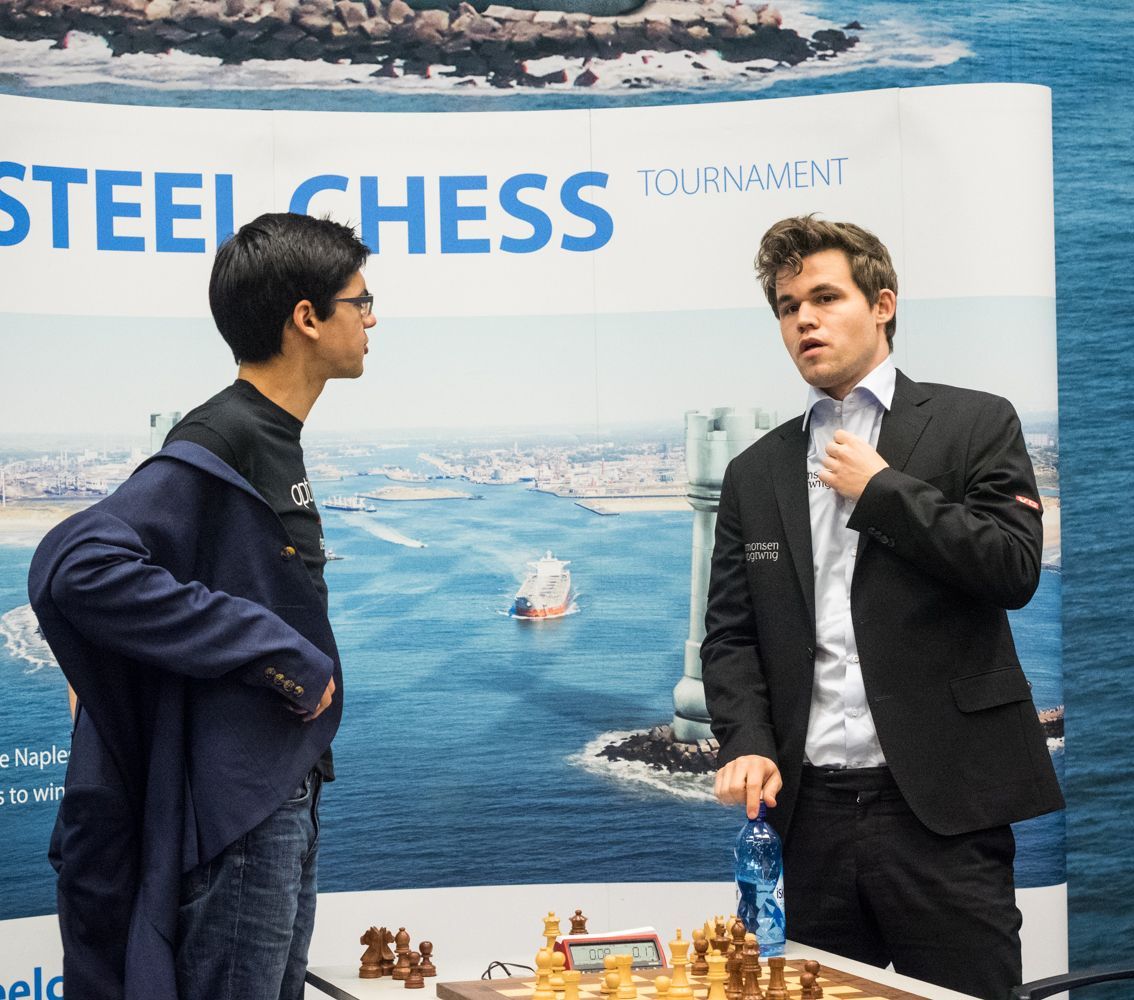
For the longest time, Wijk didn't break ties. If multiple people finished first, they were co-winners. That changed in 2018.
GM Anish Giri, who began representing the Netherlands in 2009 at the age of 14, was looking to be the tournament's first Dutch champion since 1985. Of course, he ran into Carlsen who did the Magnus thing and won the blitz tiebreak.
The biggest news the following year, besides Magnus winning for the second straight year and seventh time overall, was Kramnik's retirement after the tournament.

GM Fabiano Caruana won his first Wijk tournament in 2020, setting the stage for the return of the Wijk aan Zee championship to its host country. The first Dutch winner since 1985 was a guaranteed fact by the end of 13 rounds in 2021, it just wasn't known who it would be until GM Jorden van Foreest finally beat Giri in armageddon.
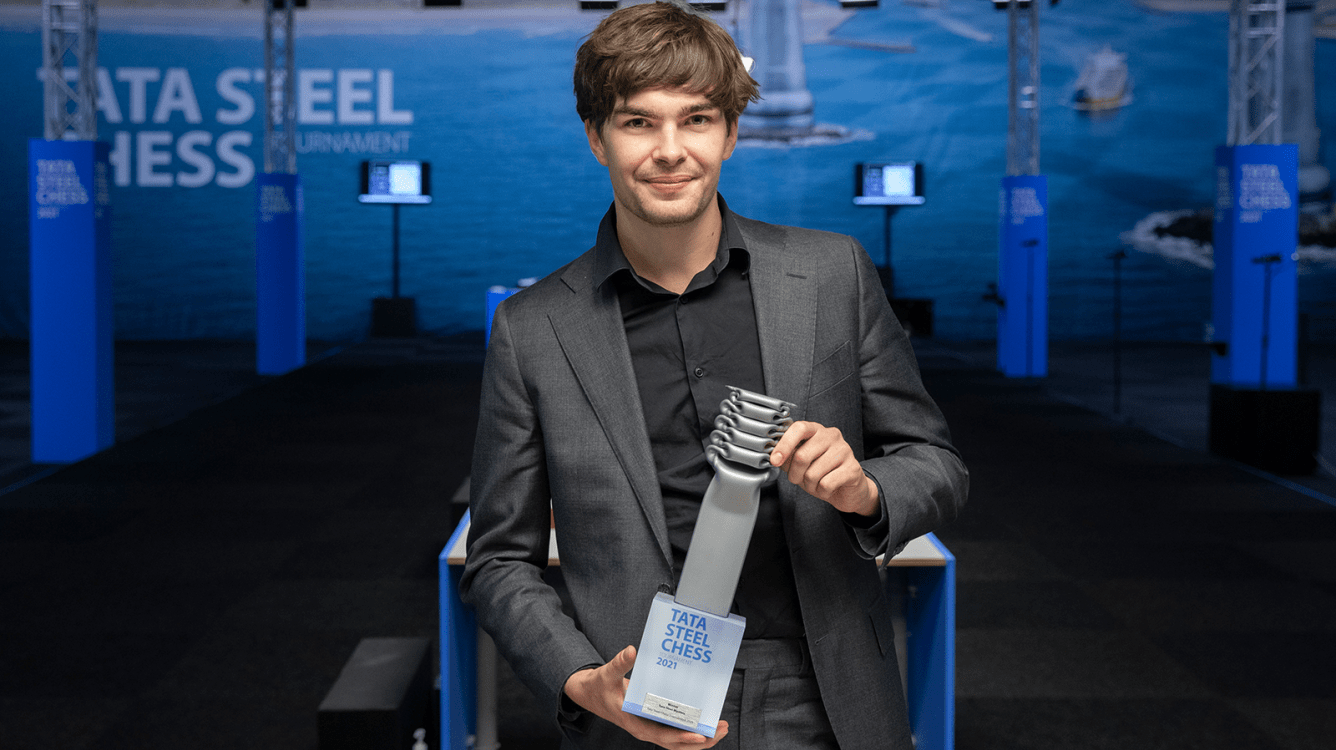
Conclusion
We hope you enjoyed this photographic look back at the longest-running annually-held strong tournament in chess history. Did we miss any of your favorite years? Let us know in the comments.
Be sure to catch the exciting conclusion of Tata Steel Chess 2022 on Chess.com!
